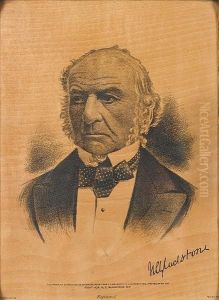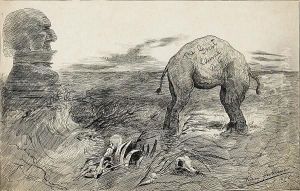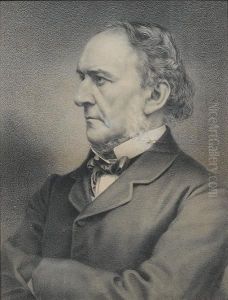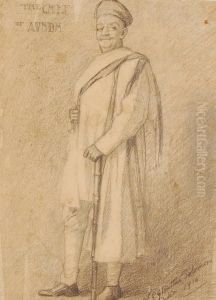William Ewart Gladstone Paintings
William Ewart Gladstone was not an artist in the traditional sense of the word, as he is most renowned for his career as a British statesman and politician rather than for any contributions to the visual arts. Born on December 29, 1809, in Liverpool, Gladstone was educated at Eton and Christ Church, Oxford, and he initially embarked on a career in business before turning to politics. He entered the British Parliament in 1832 as a Tory and went on to serve as a Member of Parliament for over sixty years.
Throughout his political career, Gladstone was a dominant figure and served as Prime Minister four separate times—1868–74, 1880–85, February-July 1886, and 1892–94. His terms in office were marked by numerous reforms in various sectors including finance, education, and electoral law. He was known for his oratorical skills and his deep moral conviction, often bringing a near-evangelical fervor to his politics.
Gladstone's political career also coincided with a period of major social and industrial change in Britain. He was a liberal reformer, promoting the extension of political rights, the pacification of Ireland through various Home Rule bills, and the disestablishment of the Church of England in Ireland. His government passed several significant laws, including the Elementary Education Act 1870, which laid the foundation for the modern British educational system.
Apart from his political career, Gladstone was a man of letters and a scholar. He wrote extensively on classical literature, and his intellectual pursuits were wide-ranging, although these contributions are not typically what one might categorize as 'artistic works.' He was also a devout Christian and saw his political work as part of his religious duty.
Gladstone remained active in politics almost until his death on May 19, 1898. His contributions to British public life and his reformist legacy have made him one of the most respected and influential figures in the history of British politics. While Gladstone may not have been an artist, his mastery of the spoken word and his profound influence on the political landscape could be seen as an art form in its own right. His life and work continue to be studied and admired for their impact on the United Kingdom and the broader world.



